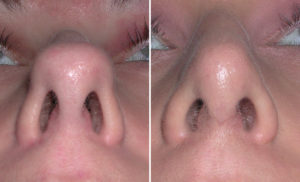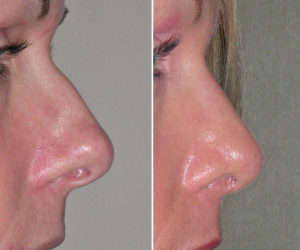Background: The shape of the nose is a combination of the form of its osteocartilaginous framework and the thickness of the overlying skin. The skin plays a major role in the appearance of the nose particularly as the nasal skin becomes thicker. But regardless of thick or thin nasal skin rhinoplasty surgery is about changing certain aspects of the underlying bone and cartilage and seeing how well the elevated skin eventually redrapes down around it to reveal the new shape of the nose.
One of the most common motivations to consider rhinoplasty is to change the shape of the tip of the nose. Structurally the confluence of the lower alar cartilages and the septum, which comprises the tip, is the most complex area of nasal anatomy. The size of the lower alar cartilages and how they meet over the septal angle is highly variable. This leads to a wide variety of differing tip deformities which have been classified into over twelve specific types with specific surgical management strategies for them.
The boxy tip is a classic type of nasal deformity which is seen as a broad rectangular shape best seen from below. It has been classified into three types based on the intercrural angle of divergence and the interdomal width. The type 1 boxy tip has a wide angle of divergence but normal dome width, type II has a normal angle of divergence and increased interdomal distance while type III has both an increased angle of divergence and interdomal width.
Case Study: This female was bothered by the shape of her nose with a desire to reduce its hump and primarily make the tip look less masculine and more defined Her nasal tip appeared very square with a strong feel to the lower alar convexity. Her boxy tip would be classified as as type III.


Case Highlights:
1) The shape of the nasal tip is highly controlled by the underlying cartilages which support the nasal skin which is stretched over it.
2) Then boxy nasal tip is an appearance created by having widely separated domes combined with an excessive convex curve to them…creating a tip that appears like a box.
3) Reshaping the boxy tip requires not just reducing the interdomal width and but also change the convex shape of the lower alarm cartilages.
Dr. Barry Eppley
Indianapolis, Indiana




